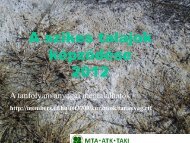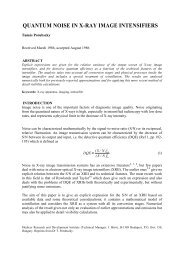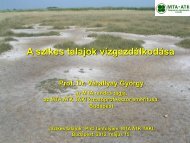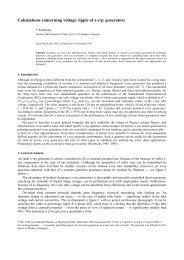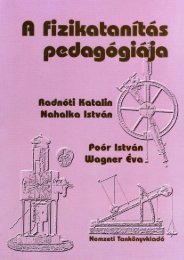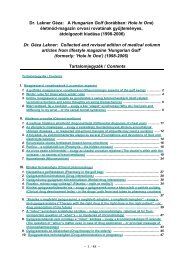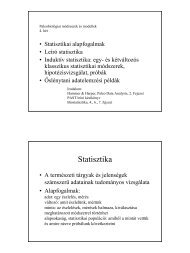Abstract form
Abstract form
Abstract form
Create successful ePaper yourself
Turn your PDF publications into a flip-book with our unique Google optimized e-Paper software.
and Na is decreasing up to 6-8% and 1-1.8%, the indices of pH environment and total<br />
alkalinity decreased to the side of soil neutralization (pH 7.8-8.4), the content of<br />
calcium carbonate increased (6.2-7.9%).<br />
Vegetative residuals favoured intensive development of the main physiological groups<br />
of microorganisms (see Table). Their stimulating effect is especially seen in the soil<br />
under lucerne (4820 ths/g), sainfoin (4694ths/g), rye+vetch+rape (4517ths/g). But in the<br />
soil under wild vegetation and pure rye sowing, the stimulating effect of vegetative<br />
residuals is lower.<br />
The ratio of the main physiological groups of microorganisms in the irrigated meadow grey soil<br />
(layer-0-25cm, ths/g of soil) in spring<br />
Plant<br />
Total number of<br />
microorganisms<br />
Percent of the total number of microorganisms<br />
Wild vegetation<br />
Lucerne<br />
Sainfoin<br />
Rye<br />
Rye+vetch+rape<br />
1489<br />
4820<br />
4694<br />
2849<br />
4517<br />
Bacteria Actinomycetes Microscopic<br />
fungi<br />
58<br />
76<br />
75<br />
68<br />
75<br />
42<br />
24<br />
25<br />
32<br />
25<br />
0.09<br />
0.19<br />
0.18<br />
0.11<br />
0.18<br />
Spore<br />
<strong>form</strong>ing<br />
bacteria as<br />
percent of<br />
total number<br />
of bacteria<br />
15.0<br />
9.8<br />
9.4<br />
13.9<br />
9.7<br />
In the composition of microflora, the number of nonspore-<strong>form</strong>ing bacteria increases,<br />
but that of spore-<strong>form</strong>ing bacteria decreases. In the virgin soil, the content of<br />
actinomycetes is higher (up to 50% out of the total number of microorganisms), but the<br />
number of spore ammonifiers is lower (up to 10-19% out of the total number of<br />
bacteria).<br />
The qualitative composition of microorganisms in the soil under lucerne and<br />
rye+vetch+rape is rich compared to the soil under rye and wild vegetation. Here among<br />
the ammonificating bacteria the representatives of Bacillus prevail. Bac. mesenteicus<br />
multiplied intensively (38-45%). The number of bacilli was at its highest point in<br />
rhizosphere close to the flowering period.<br />
The number of microscopic fungi in the virgin soil is low and they are only from<br />
Aspergillus genus. In the soil under lucern and rye+vetch+rape there are an increasing<br />
number of microscopic fungi and enrichment of their qualitative composition<br />
(Aspergillus, Penicillium, Trichoderma, and Alternaria). The appearance of the<br />
representatives of Penicillium, Trichoderma, and Alternaria along with Aspergillus<br />
indicates the <strong>form</strong>ation of favorable environmental conditions in the soil under lucerne,<br />
rye+vetch+rape. The vegetative residuals of these plants have a stimulating effect on the<br />
intensive development of the main physiological groups of microorganisms.<br />
In the soils under all the variants, we could observe seasonal fluctuation of the number<br />
of the particular physiological groups of microorganisms as well as their total number<br />
(maximum exceeds minimum 2-2.5 times as much).<br />
While observing the soil profile under all the crops downwards, it was found that the<br />
absolute and relative number of microorganisms decreased drastically. It was also<br />
found experimentally that correlation coefficient among the number of microflora, and<br />
the total reserve of vegetative residuals of lucerne and rye+vetch+rape is 0.127-13,<br />
together with living roots – 0.380-0.401, together with dead roots- 0.680-0.715.<br />
The sowing of lucerne and rye+vetch+rape and the application of organic and mineral<br />
(N 90 P 120 K 60 kg/ha) fertilizers, improving physical and chemical properties of meadow<br />
19



